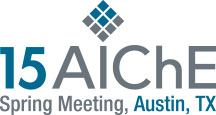

Past serious reactive chemical accidents have had a profound impact on the chemical industry and the approaches taken towards process safety. Much of this knowledge has been picked up and presented as a part of the chemical engineering educational curriculum. However, the T2 Laboratories Inc., runaway reaction incident in 2007 provided the catalyst to spur AIChE and ABET to formally introduce a “safety” education requirement into the accreditation program criteria. One of the areas that must become an integral part of the education of future chemical engineers is the understanding and recognition of reactive hazards. University professors have a key role in in this education, and while some have had exposure to reactive hazards through industry experiences, it makes sense to invite industrial professionals to lend their expertise to the classroom.
In this presentation we describe a section on reactive hazards that has been developed and presented in the senior design classes in the Chemical and Biological Engineering department at the South Dakota School of Mines and Technology. Examples of past runaway reactions are readily available through SACHE, CCPS, and the Chemical Safety Board (CSB). Many of these include pictures and videos that bring to life the risks and consequences of such reactive hazards. The senior design classes utilize these videos and safety certificates, but have lent emphasis to industrial reactive hazards by having an engineer from industry present first hand experiences and their perspective. Hands-on exercises and homework examples, based on industrial systems, were developed to provide students with opportunities to apply important principles. Students culminate this module by practicing techniques learned by working through the more complex SACHE T2 Runaway Reaction and Explosion module developed by Dr. R. Willey.
